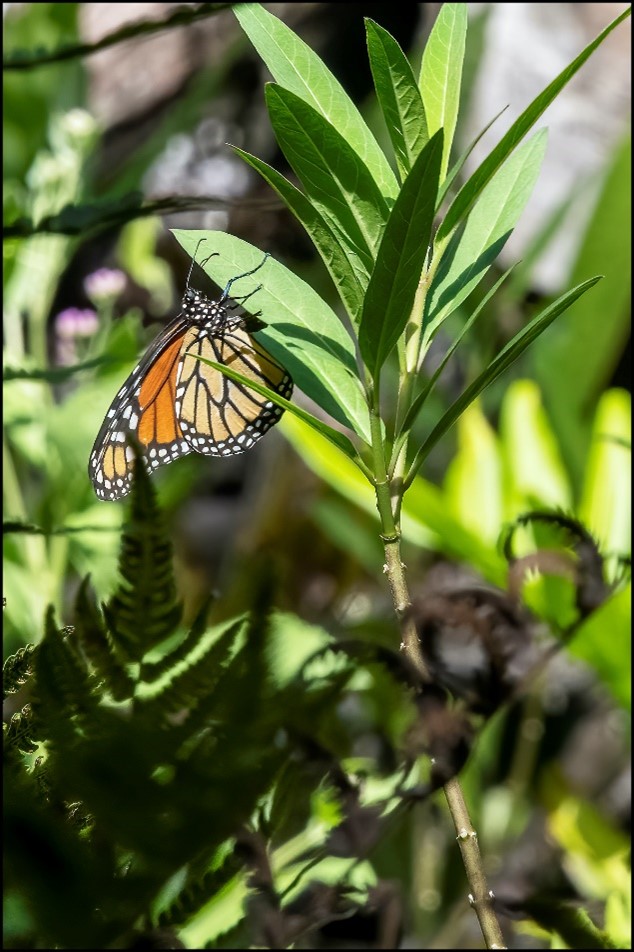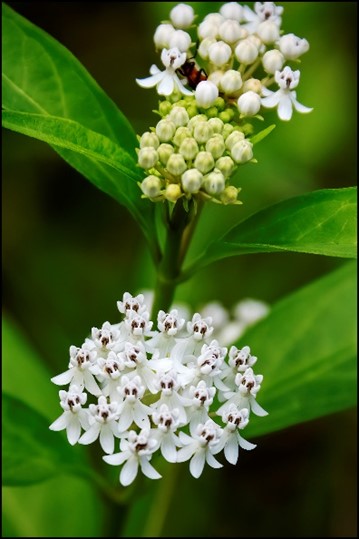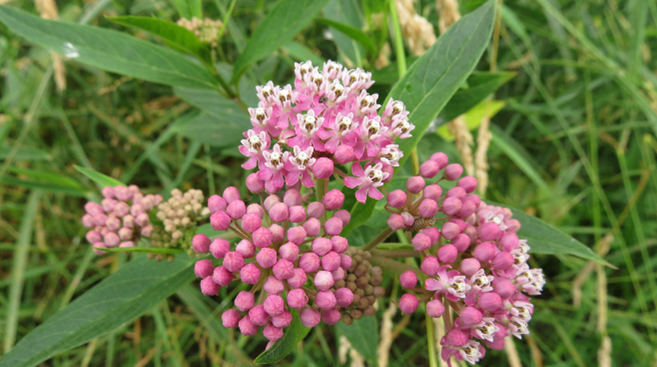The monarch butterfly (Danaus plexippus) is an easily recognizable and beloved butterfly species in North America. Monarchs are one of only a few migratory insects. They embark upon a 3,000 mile migration each fall, heading to the cool, high mountains of central Mexico, where they overwinter. They pass through Florida on their long journeys. Like all butterflies, monarchs have a different diet as larval caterpillars than as adult butterflies. In the caterpillar stage, they feed exclusively on plants from the milkweeds group of the Apocynaceae family. In the butterfly stage, monarchs feed on nectar from a variety of flowering plants, including milkweed.
The fate of the monarch butterfly is currently in peril. Scientists estimate that monarch populations have declined by more than 80% over the past two decades. They are threatened by climate change, habitat fragmentation, pesticides, and overwintering site degradation. In the US, we have both an eastern and western monarch population. The eastern monarch makes up roughly 99% of all North American monarchs. Within 50 years, the U.S. Fish and Wildlife Service estimates up to an 80% probability of population collapse for eastern monarchs and a 96-100% probability for western monarchs.
Florida has over 20 species of native milkweed, upon which monarchs rely for their survival. Three native milkweed species can be found at local native plant nurseries: butterfly weed (Asclepias tuberosa), swamp milkweed (Asclepias incarnata), and aquatic milkweed (Asclepias perennis). While the non-native tropical milkweed (Asclepias curassavica) is widely available in nurseries and big box stores, the native milkweeds are preferable for our monarchs. Stay tuned to learn more about this in our next blog post!

Photo by Wade Collier
“Monarchs are the face of the wildlife extinction crisis where even once common species could now disappear. They need us because if we don’t act now to save them, monarch migrations will collapse and that would be morally unforgivable.”
Tierra Curry, a senior scientist at the Center for Biological Diversity.
How many Monarchs & Milkweeds can you find this month? Help EcoFlora document as many monarch butterflies and milkweed plants in Sarasota and Manatee Counties as possible by May 31.
Join the project on iNaturalist HERE!
NOTE: We’re interested in observations of both native and non-native milkweed – just indicate whether your milkweeds were wild or captive.
Commonly available from local native plant nurseries:

butterfly weed (Asclepias tuberosa)
Photo by Wade Collier

aquatic milkweed (Asclepias perennis)
Photo by Wade Collier

swamp milkweed (Asclepias incarnata)
iNaturalist Photo by megachile
Butterflies and moths that rely on milkweed as a host plant in our area:
monarch (Danaus plexippus), unexpected cycnia (Cycnia inopinatus), queen (Danaus gilippus), Isabella tiger moth (Pyrrharctia Isabella), cecropia silkmoth (Hyalophora cecropia), gray-winged pareuchaetes (Pygarctia eglenensis), celicate cycnia or cogbane tiger (Cycnia tenera), milkweed tussock moth (Euchaetes egle), Sprague’s pygarctia moth (Pygarctia spraguei), tropical milkweed butterfly (Lycorea halia), sky-pointing moth (Agathodes designalis), soldier or tropical queen (Danaus eresimus), striped garden caterpillar moth (Trichordestra legitima), black-shaded platynota (Platynota flavedana), fall armyworm moth (Spodoptera frugiperda)
